The WaterSense Current Spring 2008
In This Issue VI, Spring 2008:
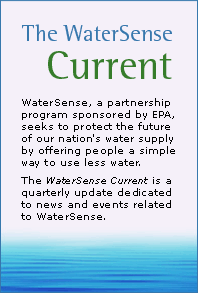 |
In This Issue: |
Laying the Foundation for Water-Efficient New Homes

What if you could buy a newly constructed house that was so water-efficient it used only 80 percent of what an average new house in the United States uses, without calling for any sacrifice? Well, soon, you will have that choice—WaterSense is developing a program to bring water-efficient homes to a neighborhood near you!
In pursuit of this goal, EPA will soon unveil its draft WaterSense specification for new homes. The draft specification incorporates EPA's criteria for product categories earning the WaterSense label (toilets and faucets) and requires many other practices and technologies aimed at bringing water efficiency into the entire home.
The movement to make new homes water-efficient couldn't be happening at a better time. Residential water use accounts for more than half of publicly supplied water in the United States—more than is supplied to both business and commercial industries combined. In fact, a family of four uses approximately 400 gallons of water every day. When final, this new specification will hopefully provide a starting point for homeowners to lower these staggering numbers and for builders to incorporate water efficiency into all aspects of new home design. On average, and of course depending on homeowners' water habits, a WaterSense labeled new home will be designed to use about 20 percent less water per year than other new homes built today.
In addition to WaterSense labeled toilets and faucets, as well as other water-efficient plumbing devices, WaterSense labeled new homes will feature ENERGY STAR® qualified dishwashers and washing machines. They also will feature a hot water distribution system that decreases how long hot water takes to get to your tap. This will help prevent homeowners from running the tap and shower while waiting for hot water, a practice that wastes thousands of gallons of water per year.
WaterSense labeled new homes will be water-efficient outside, too: if an irrigation system is utilized in the home, it must be installed by a WaterSense irrigation partner, and the surrounding landscape should feature native plant species that require minimal watering.
These new specifications can have a significant impact not only on water efficiency but on energy efficiency as well. Water heating accounts for 24 percent of the energy consumed in a household, and an average household spends about $250 per year for hot water. If one in every 10 homes in the United States upgraded to WaterSense labeled toilets and faucets in the bathrooms, it could save more than 120 billion gallons of water per year and more than $800 million per year in household utility bills.
EPA expects to finalize its new homes specification at the end of 2008. Stay tuned for the latest news about WaterSense New Homes by visiting the WaterSense Web site.
Move Over, SpongeBob!
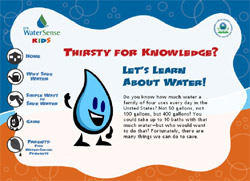
If you know kids who like SpongeBob SquarePants, they'll love the new kids-only pages on the WaterSense Web site, complete with an interactive game with its own cartoon hero. Get their imaginations and water-efficiency awareness flowing with activities and questions all about water:
- How can you save enough water in a month to fill a huge fish tank for six small sharks?
- How does food coloring help test for leaks in toilets?
To find out answers to these questions and more, visit WaterSense Kids. Here, Flo, our water-efficiency hero, teaches kids why it's important to save water and how to use less. Kids also can play "Test Your WaterSense," a Pac-Man-like game where they guide Flo through a maze. During the game, they'll have to dodge the villainous Water Wasters—like Sogosaurus, who doesn't care that she waters her lawn every day of the week, Drip Drip, who won't fix his leaky faucet, Swirly, who likes to flush his toilet all the time, and Drainiac, who runs her faucet when brushing her teeth. The little squirts will become WaterSense Heroes in no time!
Toilet Rebate Program Aids Drought-Stricken Georgia
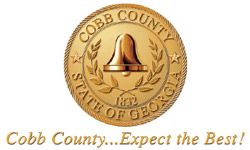
Last October, the severity of Georgia's water situation became clear when the Army Corps of Engineers announced that only a three-month supply of water remained in Lake Lanier, metro Atlanta's primary source of drinking water. Headlines from the Atlanta Journal-Constitution drove home the warning: "Drought forces cuts at gardening landmark," "Drought could move events from Piedmont Park," "Drought could keep swimming pools empty," "Drought may outlaw pools."
Despite recent spring showers, the drought still hasn't relented, so residents, local governments, and water utilities are finding new ways to use water more efficiently, often hidden in mundane, everyday activities such as flushing a toilet. Soon after the Army Corps announcement, WaterSense program partner Cobb County Water System began working to ease the drought by offering a rebate to encourage its customers in north metro Atlanta to install high-efficiency toilets in their homes, and as a result lessen the demand on local water supplies.
Customers can earn a $100 rebate on WaterSense labeled toilets for up to three toilets per household. The program is available for Cobb County Water System residential customers whose homes were completed before 1993. To receive the $100 rebate, customers need simply to refer to a list of toilets that have earned the WaterSense label. Customers then fill out an application and return that to the county with a copy of their original purchase receipt for the toilet. The rebate appears as a credit on the customer's water bill.
As an alternative, Cobb County Water System also is offering a $50 rebate to residents who replace pre-1993 models with 1.6-gallons-per-flush (gpf) toilets, bringing these customers up to speed with the Federal Energy Policy Act of 1992 that mandated low-flow (1.6 gpf) fixtures in all homes. Already, Cobb County Water System has rebated more than 2,000 toilets.
In addition, the worsening drought in the Atlanta region has helped motivate other members of the Metropolitan North Georgia Water Planning District to adopt toilet rebate programs so that today customers anywhere in the district can participate in the same toilet rebate program. Thanks to these utility efforts, major retailers in and around Atlanta now stock multiple WaterSense labeled toilet models, where before they carried none.
How to Locate WaterSense Labeled Products
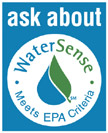
Having trouble finding WaterSense labeled products in stores near you? Don't panic! Follow these pointers to find and order WaterSense labeled plumbing fixtures:
- Be Froogle. Visit Froogle
 ,
Google's product search engine, and search "WaterSense."
You'll find a variety of WaterSense labeled toilets and faucets,
which you can purchase with just a few clicks of the mouse.
,
Google's product search engine, and search "WaterSense."
You'll find a variety of WaterSense labeled toilets and faucets,
which you can purchase with just a few clicks of the mouse. - Meet the Maker. Is there a manufacturer whose products you prefer? Find out which manufacturers make WaterSense labeled toilets and faucets or faucet accessories by visiting the WaterSense Web site. There, you'll find a list of manufacturers, model names, and model numbers.
- Buy Locally. Visit a WaterSense retailer or
distributor partner in your own backyard. Case-in-point: distributor
Ferguson Enterprises
 has 1,500 service centers and six distribution centers across
the United States and can usually ship products to customers within
two to three business days. Start your research on WaterSense's
Meet Our Partners page.
has 1,500 service centers and six distribution centers across
the United States and can usually ship products to customers within
two to three business days. Start your research on WaterSense's
Meet Our Partners page. - Know Your Options. Visit WaterSense partner
Home Depot's Eco Options home page
 and click on the "Water Conservation" tab. Numerous
WaterSense labeled products are available for online purchase,
plus you will find a bunch of water conservation tips for home
improvers.
and click on the "Water Conservation" tab. Numerous
WaterSense labeled products are available for online purchase,
plus you will find a bunch of water conservation tips for home
improvers.
Once you find your product, make sure you follow these tips:
- Think Twice. Many high-efficiency toilets are sold in two parts. Make sure both the bowl and the tank are WaterSense labeled.
- Get the Specs. If you're searching for a specific product, be sure you know the model name and number. You can find all the specifics on the Find a Product portion of the WaterSense Web site. Remember, for most toilets you'll need two numbers—one for the tank and one for the bowl.
- Be Particular. WaterSense partner Kohler lets
you refine your search for WaterSense labeled toilets by bowl
shape, flushing technology, and compliance to the Americans With
Disabilities Act. On Kohler's
home page
 ,
select the drop down menu "Bathroom Products" and select
"Toilets." From there you can limit your search to high-efficiency
toilets with exactly the features you're looking for.
,
select the drop down menu "Bathroom Products" and select
"Toilets." From there you can limit your search to high-efficiency
toilets with exactly the features you're looking for.
Remember, the best way to bring WaterSense labeled products to your neighborhood is to ask for them! Let retailers and distributors know that water-efficient products just make sense.
Hire a Pro After the Winter Thaw-Out
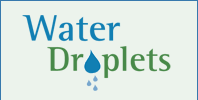

As the weather warms and the ground thaws, now is an excellent time to hire a WaterSense irrigation partner to inspect your irrigation system. These professionals have completed a certification program recognized by WaterSense for its emphasis on water efficiency, and they can fine-tune your system for maximum savings. Find a WaterSense irrigation partner near you.
Ask the Irrigation Experts
Do you have questions about the best time of day to water? Drip irrigation vs. micro spray jets? Ask a WaterSense irrigation partner by e-mailing your questions to WaterSense. We will post the questions and responses from our irrigation partners on the WaterSense Web site in July for Smart Irrigation Month.

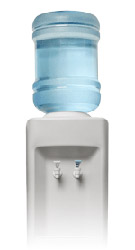
Take a cue from one of your fellow WaterSense Current readers and try this water-saving tip.
"My mother-in-law was sharing with me the other day that when she fills the water for her bath, she begins by plugging the drain and lets the water run until it gets hot (thus not wasting any water) then she lets the 'hot' water run until it warms the cooler water in the tub. I have always just left the drain open and let all that precious water go down the drain until the water gets warm and then plugged the drain. What a simple idea—why didn't I think of that!"
— Wendy Kisicki, from Denver, Colorado
Have a water-saving idea to contribute? E-mail it to the WaterSense Helpline.




